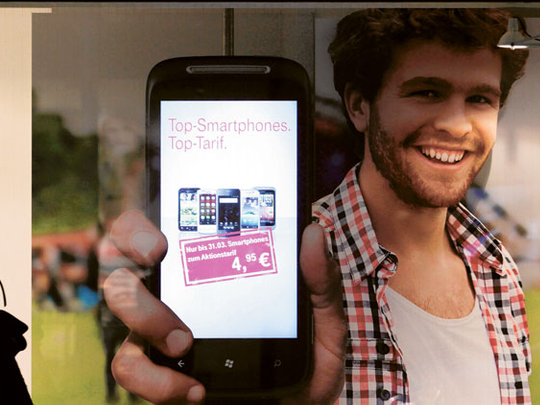
Dubai : Demand for video ads on digital platforms will propel the size of the region's digital media advertising to around $220 million (Dh807.88 million) this year against the estimated $150 million in 2011. (Even then, last year's tally represents less than 5 per cent of the ad spend in the region.)
"Ad rates for digital ads are significantly higher than in the rest of the world — for instance, the leading newspaper portals sell it at four to five times what those in the US or the UK do," said Isam Bayazidi, CEO of Ikoo, which represents the advertising interests of more than 120 regional news portals.
"The average rate on a banner ad at a leading UK newspaper is $8 to $10, here it would be $30-$40 if not more."
Even at these rates advertisers are signing up, with bookings made a month in advance at some media titles. "I don't think the rates are prohibitive; it's mostly the readiness for digital advertising that is lacking," said Bayazidi.
While global consumer brand majors are setting aside more than 20 per cent of their regional budgets for online in the last two years, the same cannot be said about local brands.
That explains the lower adoption trends even though there are exceptions such as the hospitality and travel sectors.
Tanvir Kanji, who heads the Inca Tanvir agency, is one of the sceptics.
"Everyone wants to experiment since digital is the flavour of the season. Few know how to make use of it though.
"A lot also depends on the product category, and more importantly, the target group. Traditional media still has the major allocation of the budget — almost 90 to 95 per cent and in most cases 100 per cent."
To tide over advertisers' reluctance, there is every chance that the ad industry would push the claims of video and smartphone platforms rather than try and sell all things digital. And with good reason too. While "it's true that the [regional] market hasn't matured beyond SMSes yet, in the past couple of years we have noticed that more brands are willing to dip their toes into other forms of mobile marketing," said Sagar Shetty of Plus 7, a mobile advertising firm.
"The growth might be slow right now, but it is an area that's poised for tremendous growth in the coming years.
More targeting options
"Mobile provides advertisers with much more targeting options as compared to digital. You can target consumers by handsets, device, carrier and you can even geo-fence your campaigns."
Methods to track the activity of users are also becoming more sophisticated. There are apps that allow advertisers to measure not just how many times their iPhone or Android application is clicked on, but also the number of downloads and first opens that are generated post-click.
Bayazidi makes a similar case for video as well. "You cannot compare a video to a banner ad; when you are seeing a video ad, you are giving it your full attention.
"With a banner, it does not necessarily mean that it will have the full attention. You cannot compare the price of a video and banner.
"If video and mobile advertising doubles in size each year, it's huge growth. Doubling is okay."
But for the advertising industry at large, any growth over and above what conventional media is achieving these days, this situation is more than okay.
More than 50% use mobiles to search the net
Dubai: UAE residents are as likely to reach out for their mobiles to access a website as they would for a computer. And they tend to do that quite often in a day.
A recent survey by Plus 7 found that more than 50 per cent of respondents used their mobiles multiple times during a day for web searches or spending quality time with apps.
As with their peers elsewhere, they use it to get the latest news bytes, send emails and engage in social networking. Those who were 25 or younger prefer to use the medium for games while those above 36 tend to stick with the news. The younger base of users also tend to spend more time with their mobiles in the hours after 6pm, while the heaviest usage among the 36-50 age group were early morning and in the hours before 12pm.
Despite the ease of use and access that mobiles tend to provide, only slightly more than a third of the respondents favoured making purchases through the handsets.









